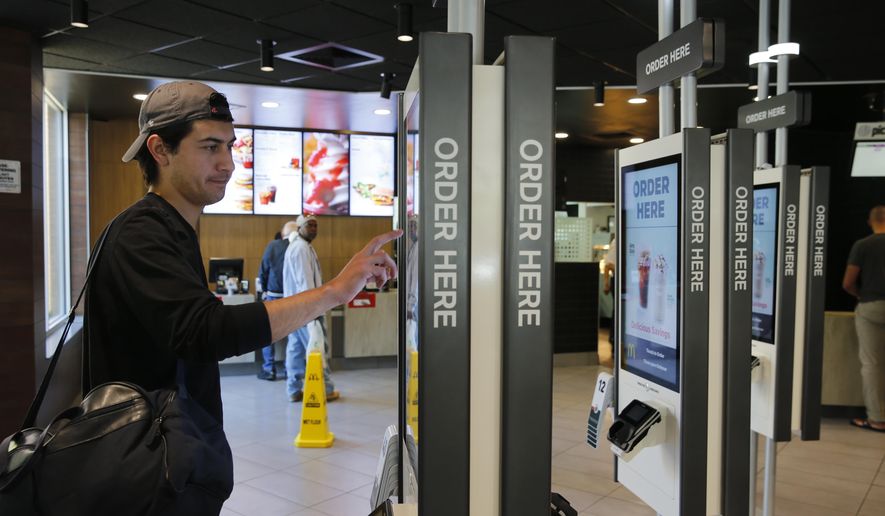In response to recent minimum wage increases in California, fast food restaurants across the state are shifting to automation to get rid of wage-earning humans.
The move to making customers place orders at digital kiosks alleviates what owners say is the financial strain of rising labor costs after the minimum wage for the state’s fast food workers increased on April 1 from $16 to $20 per hour.
Harsh Ghai, a Burger King franchise owner who manages 140 outlets along the West Coast, is leading the transition to automation. He plans to introduce digital kiosks across all his restaurants within months — a drastic acceleration from his original timeline of five to 10 years.
“The majority of that is going to get absorbed in the inflation of our food costs,” Mr. Ghai told Business Insider. “So we’re not even compensating for most of the labor costs that we’re going to be experiencing with this legislation.”
He said about 25% of his restaurants already use the ordering kiosk, and he expects the rest to start using them within the next two months.
Mr. Ghai also said price hikes to accommodate higher wages would cause a “significant impact to our traffic.”
Rather than make less money, restaurant owners are exploring alternative strategies to maintain profitability. Reducing staff numbers appears to be their primary solution for lowering overheads.
The layoffs present a stark reality for employees and their unions, who have long advocated for wage increments.
Workers at well-known chains such as Pizza Hut and Round Table pizza restaurants have also felt the impact, with job losses reported following statements from management about the unsustainable nature of the new wage costs. Meanwhile, major fast food players including McDonald’s, Chipotle, and Starbucks have signaled intentions to offset the increased expenses by raising prices.
• Staff can be reached at 202-636-3000.




Please read our comment policy before commenting.